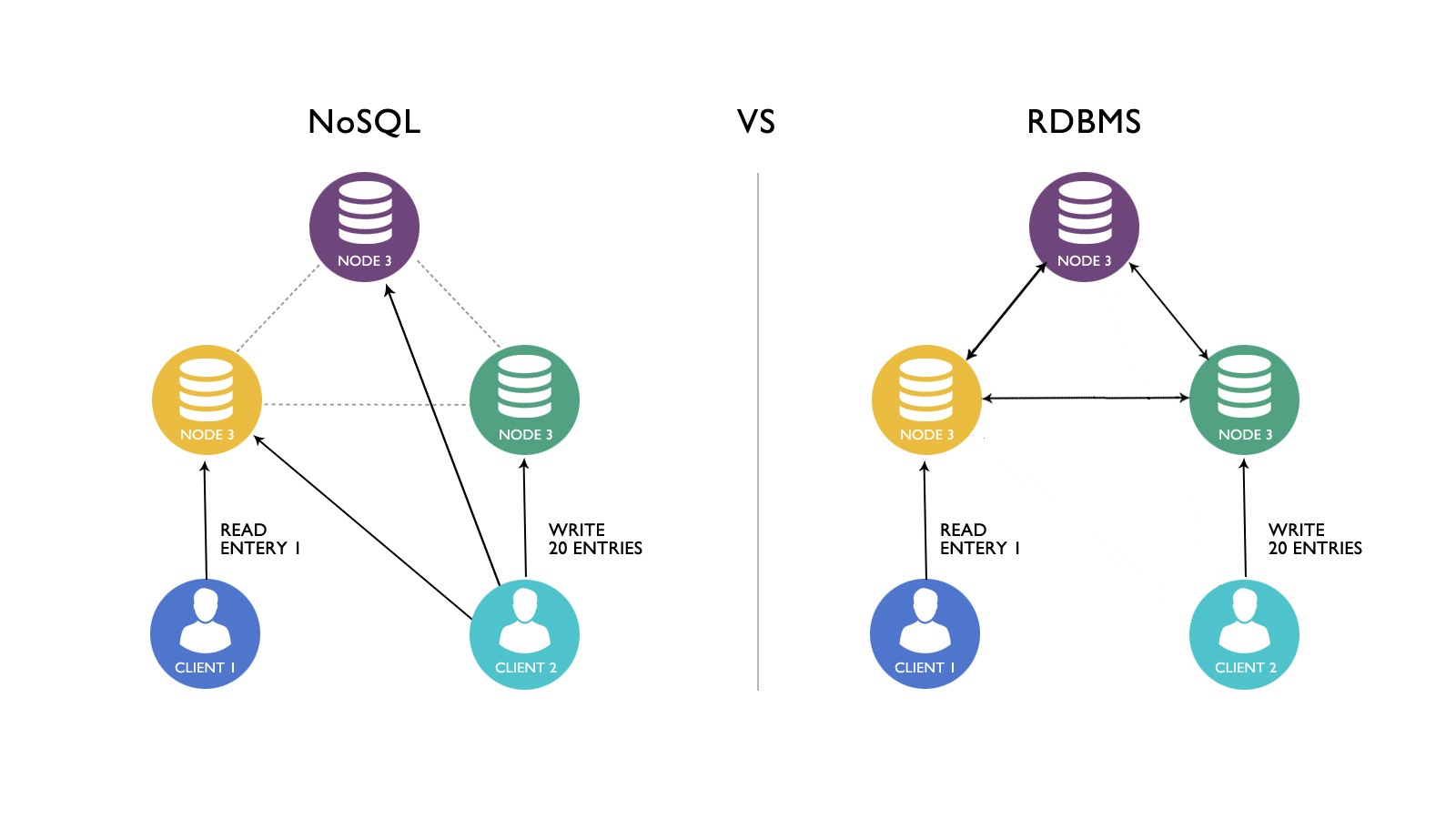 More and more data is being rapidly created, harnessed and distributed than ever before to make strategic business decisions. Traditionally, we have been dependent upon relational databases for handling storage requirements in the IT world. Relational Database Management System or RDBMS are common choice for storing financial records, logistical information and other information in new databases. It is easier to understand and also frequently replaces legacy hierarchical databases and network databases.
More and more data is being rapidly created, harnessed and distributed than ever before to make strategic business decisions. Traditionally, we have been dependent upon relational databases for handling storage requirements in the IT world. Relational Database Management System or RDBMS are common choice for storing financial records, logistical information and other information in new databases. It is easier to understand and also frequently replaces legacy hierarchical databases and network databases.
However, in areas like social media, there is no specific structure boundary for the data used. In such situations, it become challenging for RDBMS to provide cost effective Crude, Read, Update and Delete (CRUD) operations as it has to deal with relationships among various data.
Therefore, the need for new mechanism was felt to handle such large amount of unstructured data in an easy and efficient manner by web development company and other stake holders. That way, NoSQL came into picture to deal with unstructured Big Data in efficient way to achieve maximum business value and customer satisfaction.
In this post, we will look at the key differences between relational and NoSQL databases, their limitations and advantages, and the reasons why NoSQL databases are growing in popularity.
Let’s start with key features of RDBMS
Key features of RDBMS
- Structured way of data storage
- Values are atomic
- RDBMS schema provides a logical view of data organization and provides information on how the relations are associated
- Sequence of columns and row is insignificant
- Data storage is vertically scalable
- Integrity constraints maintain data consistency across multiple tables
Limitations of RDBMS
To scale the database, it needs to be distributed on multiple scales
Users have to scale the database on expensive servers that are hard to handle
In case your database doesn’t fit into tables, you will need to design a complex database structure
Reasons to choose RDBMS database
- ACID compliancy (Atomicity, Consistency, Isolation, Durability) is ensured
- Data remains structured and unchanging
Examples of RDBMS include MSSQL, Oracle, Microsoft Azure and IBM DB2.
Now, we will move our discussion to NoSQL database.
NoSQL or Not Only SQL (No Structured Query Language) provides an unstructured way of data storage.
Features of NoSQL
- It’s a collection of key-values pair, documents and wide-column stores without any standard schema definition
- Supports integrated caching
- Distributed computing
- Flexible schema
- Powerful, efficient architecture
- Easily scalable
- No complex relationships, such as the ones between tables and RDBMS
- Low cost servers allow for scaling of more data
Limitations of NoSQL
- Lack of reporting tools for performance testing and analysis
- Not appropriate for complex queries as there is no standard interface to perform queries
- No defined standards for database
Reasons to use a NoSQL
- Large amount of data with little or no structure can be easily stored
- Cloud computing and storage is effectively utilized
- Rapid development
Examples of NoSQL
MongoDB, Apache Cassandra and Hbase
NoSQL is a schema-less alternative to SQL and RDBMS. The database is designed to store, process and analyze extremely large amounts of unstructured data.
Advantages of NoSQL over RDBMS
Elastic Scaling
NoSQL database were created to overcome the limitations of RDBMS. Compared to RDBMS, NoSQL databases are flexible and scalable, and also have superior performance. RDBMS does not scale out easily on commodity clusters while NoSQL can expand transparently to take advantage of new nodes, thus substantially reducing commodity hardware costs.
Sizable Data
While it is becoming impossible for RDBMS to handle tremendously growing databases, NoSQL systems are capable to handle large volumes of data such as Hadoop and Outstrip.
Flexible Data Models
With RDBMS, change management is a real problem as even the smallest changes need to be aptly managed else service levels will be compromised. On the other hand, due to its fewer restrictions, rigidly defined Big Table-based NoSQL database can be easily used for the creation of new columns.
An overview of NoSQL
In a distributed system, managing Consistency (C), Availability (A) and Partition Tolerance (P) or CAP is of vital importance. CAP theorem put forward by Eric Brewer states that if you get a network partition, you have to trade off availability of data for its consistency. Even durability can also be traded off against latency. NoSQL database allows the developers to choose from and fine tune the system to their specific requirements.
The key difference between RDBMS and NoSQL is that while RDBMS is Transaction Consistent, NoSQL is Eventuality Consistent. RDBMS systems require the involvement of expensive DBAs for installation, design and ongoing tuning while NoSQL databases have simpler data models and automatic repair that significantly lower down the maintenance costs.
NoSQL better suited for real time analytics
NoSQL databases, in general, avoid RDBMS functions such as multi-table joins that can result in high latency. NoSQL offers choices of strict to no relaxed consistency that one needs to look on individual case basis. NoSQL setting is better suited to real time analytics and also when data is brought together from any upstream system to build an application. BI-tool support for NoSQL is growing steadily.
For a long time, RDBMS has provided mechanisms to store data persistently, concurrency control and integrating application data. However, its dominance is now receding.


 Parimal
Parimal

